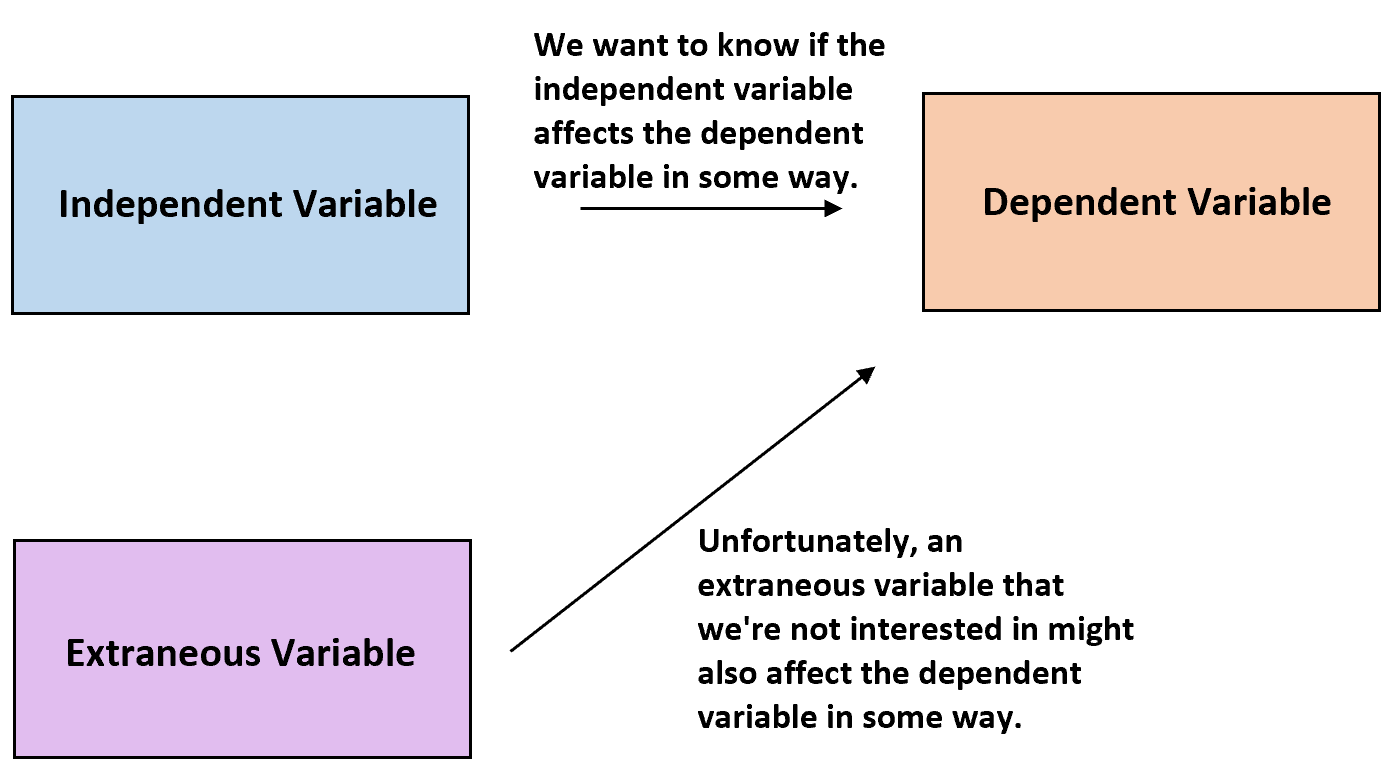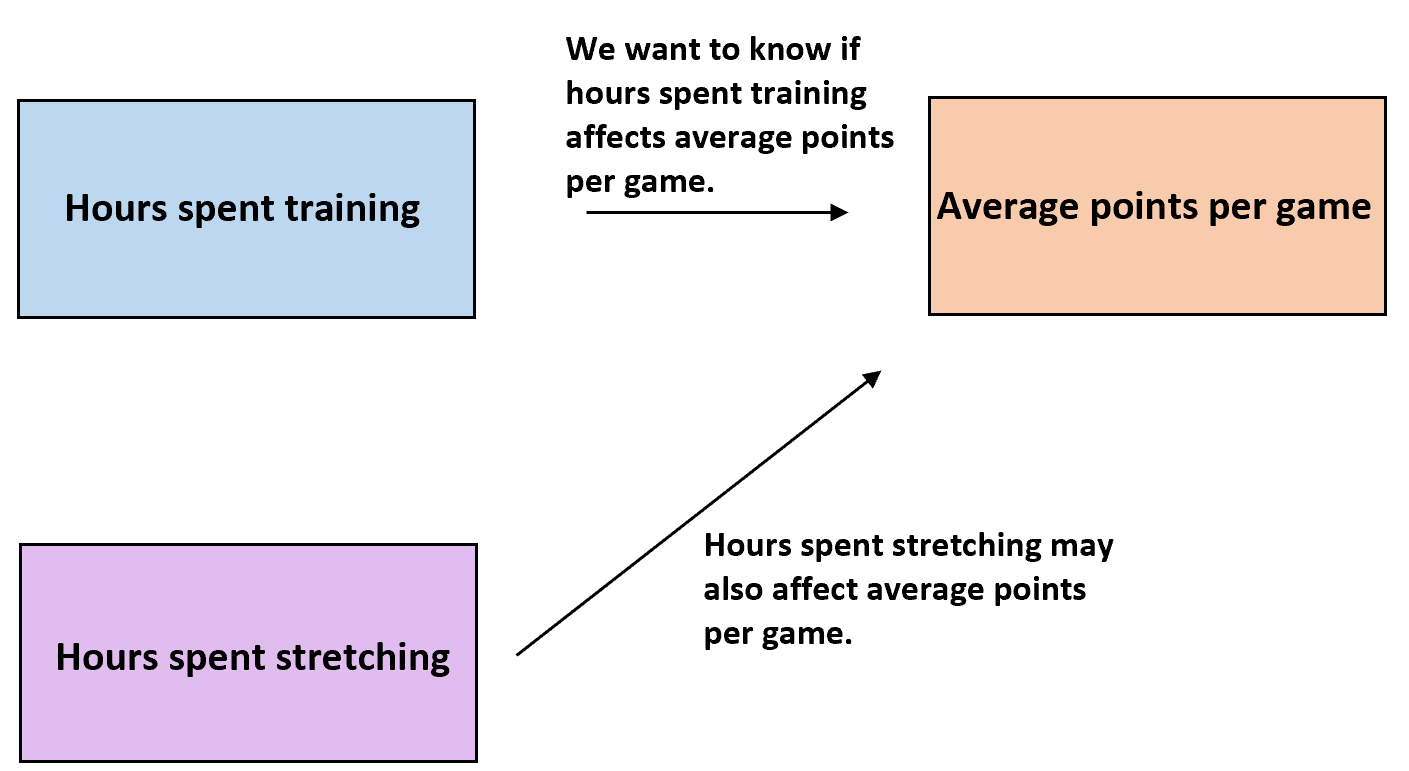The whole point of conducting an experiment is to determine whether or not changing the values of some independent variable has an effect on a dependent variable.
An extraneous variable is any variable you’re not interested in studying that could also have some effect on the dependent variable.

For example, we might want to know how the number of hours that a basketball player trains per week affects their average points per game. However, an extraneous variable that could also affect their points per game is the number of hours they spend stretching each week.

We would need to make sure that we control for this extraneous variable so that we can draw reliable conclusions about the effect that hours spent training has on average points per game.
Types of Extraneous Variables
There are four types of extraneous variables:
1. Situational Variables
These are aspects of the environment that could affect the way an individual behaves in an experiment. Examples include:
- Lighting conditions
- Noise
- Visual distractions
- Temperature
2. Experimenter Bias
This refers to ways in which the experimenter may accidently bias the way that individuals behave in an experiment. Examples include:
- Using certain phrasing to hint at the way researchers want individuals to behave.
- Speaking in a positive or negative tone when providing instructions to individuals.
3. Demand Characteristics
This refers to any clues in the experiment that could give away the true purpose of the research to the individuals. Examples include:
- Their surroundings.
- Their interpretation of what is happening in the situation.
- The researcher’s behavior.
4. Participant Variables
This refers to the natural variance among individuals and the ways in which this could affect the results of the experiment. Examples include:
- An individual’s natural intelligence.
- An individuals’ mood that day.
- An individual’s physical abilities.
- An individual’s ability to concentrate.
How to Control Extraneous Variables
There are four main ways to control for extraneous variables in an experiment:
1. Consistent environment.
Each individual should be able to participate in an experiment in the exact same environment, e.g. with the same lighting conditions, same noise levels, same temperature, and same number of potential distractions. This should minimize the effect of situational variables and demand characteristics.
2. Experimental design.
By designing an experiment such that individuals are randomly assigned to treatment groups and such that researchers are also blind to which individuals belong to which group, this should minimize the problem of experimental bias.
3. Randomization.
By randomly assigning individuals to treatments (e.g. high training volume vs. low training volume), any differences in participant ability between groups should be roughly evenly distributed. This should minimize the problem of participant variables.
Conclusion
By using a consistent environment, experimental design, and randomization, researchers can minimize the effect that potential extraneous variables can have on experiment.
Thus, when researchers draw conclusions about the effect that an independent variable has on a dependent variable, they can be sure that no extraneous variables are actually causing the true effect.